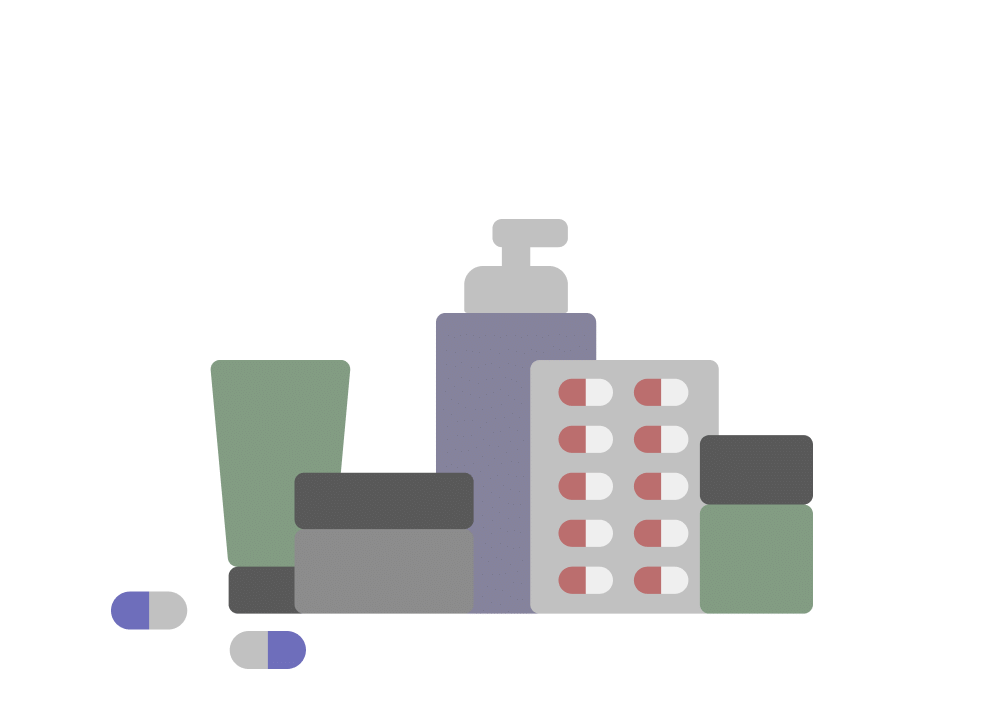
Safclav 200mg/28.5mg Tablet
Manufacturer
Safetech Formulation
Salt Composition
Amoxycillin (200mg) + Clavulanic Acid (28.5mg)
Key Information
Short Description
Safclav 200mg/28.5mg Tablet is an antibiotic medicine that helps treat bacterial infections of the ear, nose, throat, chest, lungs, teeth, skin, and urinary tract.
Dosage Form
Tablet
Introduction
Safclav 200mg/28.5mg Tablet is an antibiotic medicine that helps treat bacterial infections of the ear, nose, throat, chest, lungs, teeth, skin, and urinary tract. It is capable of killing bacteria that have become resistant to other therapies and thus also helps treat tuberculosis that is resistant to other treatments.
Directions for Use
Your child must complete the entire course of antibiotics. Stopping too soon may cause the bacteria to multiply again or cause another infection.
How it works
Safclav 200mg/28.5mg Tablet is an antibiotic. It has two active agents amoxycillin and clavulanic acid. Amoxycillin works by preventing the formation of the bacterial protective covering (cell wall) essential for the survival of the bacteria. Whereas clavulanic acid serves a special purpose of inhibiting an enzyme (beta-lactamase) that is produced by resistant bacteria. This makes the combination of amoxycillin and clavulanic acid an effective line of treatment for many types of infections.
Quick Tips
Your child must complete the entire course of antibiotics. Stopping too soon may cause the bacteria to multiply again or cause another infection. Your child may have a bitter taste in the mouth after the intake of Safclav 200mg/28.5mg Tablet. Eating citrus fruit or sipping plenty of water or fruit juice may help. Encourage your child to drink plenty of water in case diarrhea develops as a side effect. Never give Safclav 200mg/28.5mg Tablet until and unless prescribed by the doctor. Do not give Safclav 200mg/28.5mg Tablet to treat common cold and flu-like symptoms caused by viruses. Never save medicine for future illnesses. Check ‘expiry’ before giving Safclav 200mg/28.5mg Tablet to your child. Immediately discard all the expired medicines. Stop Safclav 200mg/28.5mg Tablet immediately if your child develops an itchy rash, facial swelling, or breathing difficulty.
Related Medicines

Moxikind CV Kid Tablet

Xyclav Kid 200 mg/28.5 mg Tablet

Meox CV Kid 200mg/28.5mg Tablet

Exclusive 200 mg/28.5 mg Tablet

Fanclav Kid 200mg/28.5mg Tablet

Moxking CV Kid 200mg/28.5mg Tablet

Moxbio CV Kid Tablet

Ulticlav Kid Tablet

Amock-CV 200 Tablet

Miximox CV 200 mg/28.5 mg Tablet
Frequently asked questions
Can other medicines be taken with Safclav 200mg/28.5mg Tablet?
It is essential to inform your child's doctor about any other medicines your child is taking before starting Safclav 200mg/28.5mg Tablet. Additionally, consult with your child's doctor before giving any medicine to your child, as Safclav 200mg/28.5mg Tablet may interact with other medicines or substances.
Can my child receive vaccinations while taking Safclav 200mg/28.5mg Tablet?
Antibiotics usually do not interfere with vaccine ingredients or cause adverse reactions in children who have just been vaccinated. However, children taking antibiotics should not receive vaccinations until they have recovered from the illness. Once your child feels better, the vaccine can be administered.
What lab tests may my child undergo while taking Safclav 200mg/28.5mg Tablet for an extended period?
During prolonged therapy, your child's doctor may monitor kidney and liver function tests periodically to monitor their condition.
Can I give my child a higher dose of Safclav 200mg/28.5mg Tablet than recommended?
No, giving a higher dose of this medicine can increase the risk of side effects. If your child experiences increased severity of symptoms, consult your doctor for re-evaluation.
Can I stop giving Safclav 200mg/28.5mg Tablet to my child when their symptoms improve?
No, do not stop giving this medicine to your child unless the full course of treatment is complete, even if you feel better. The symptoms may improve before the infection is completely cured. Continue giving the medicine for the prescribed duration, as it may still be showing beneficial effects.
Can Safclav 200mg/28.5mg Tablet cause diarrhea?
Yes, Safclav 200mg/28.5mg Tablet may cause diarrhea. This antibiotic kills harmful bacteria, and it may also affect the helpful bacteria in your child's stomach, leading to diarrhea. If your child experiences diarrhea, encourage them to drink plenty of water or other fluids. If diarrhea persists and you notice signs of dehydration, such as less frequent urination with dark-colored and strong-smelling urine, consult your doctor. Do not give any other medicine to your child without consulting a doctor.
Do all viral common colds result in secondary bacterial infection?
Most of the time, bacterial infections do not follow viral infections. Giving antibiotics in viral infections can increase your child's risk of developing side effects. Use antibiotics only after consulting with your child's doctor.
Is yellow-green mucus in my child's nose a sign of a bacterial infection?
Yellow or green mucus in the nose does not necessarily mean that antibiotics are needed. During a common cold, it is normal for mucus to thicken up and change from clear to yellow or green. Symptoms often last for 7-10 days.
Are there any signs that indicate my child needs immediate medical attention?
You must call your child's doctor immediately if your child experiences serious allergic reactions (breathing problems, skin rashes), gastrointestinal infections (diarrhea), and liver damage (weakness, paleness, vomiting). Although rare, these side effects are serious and require medical attention.


